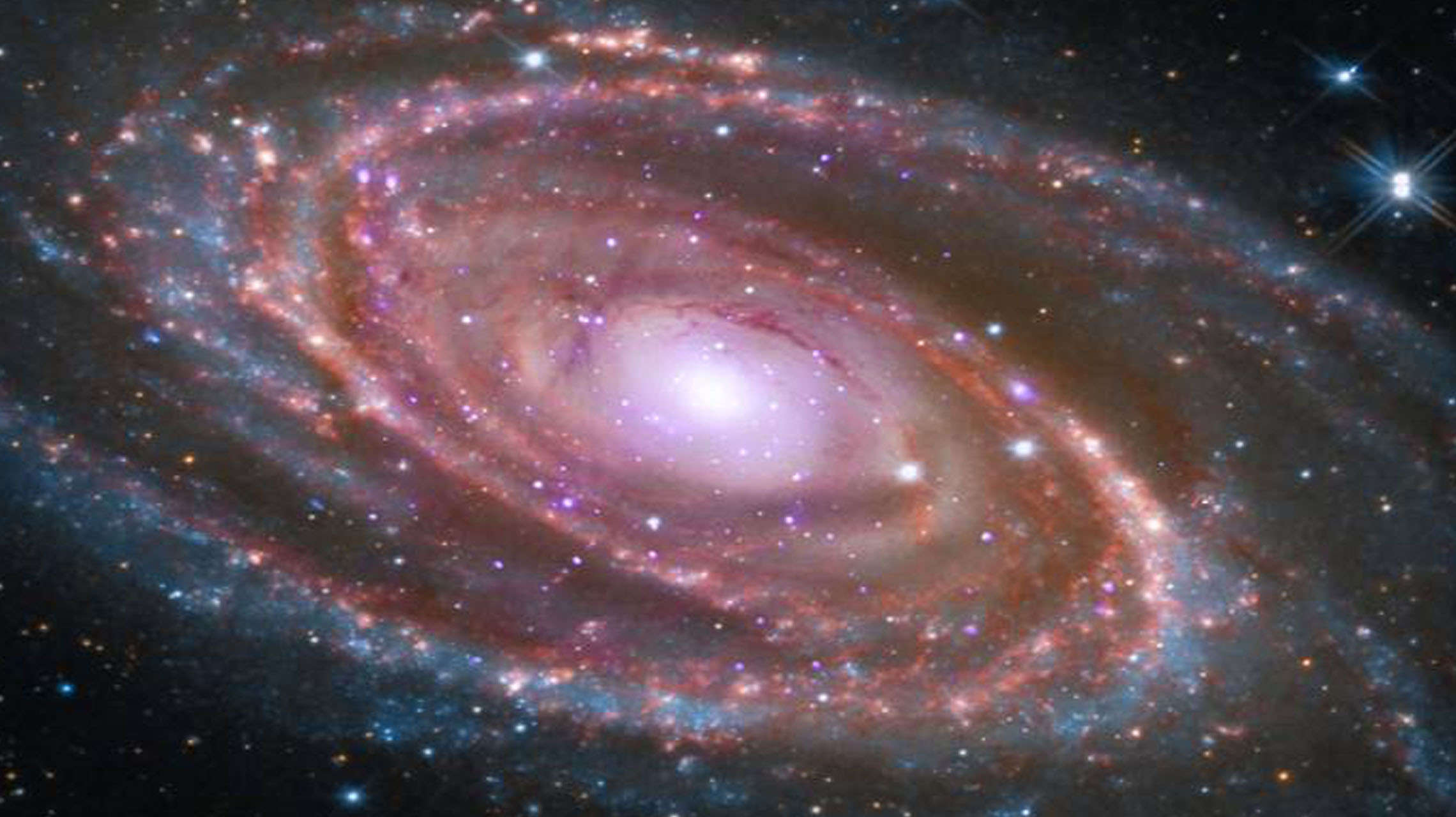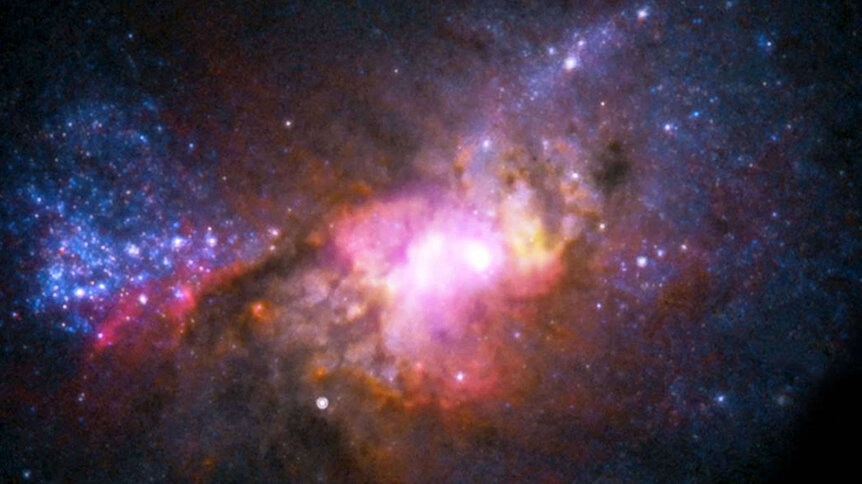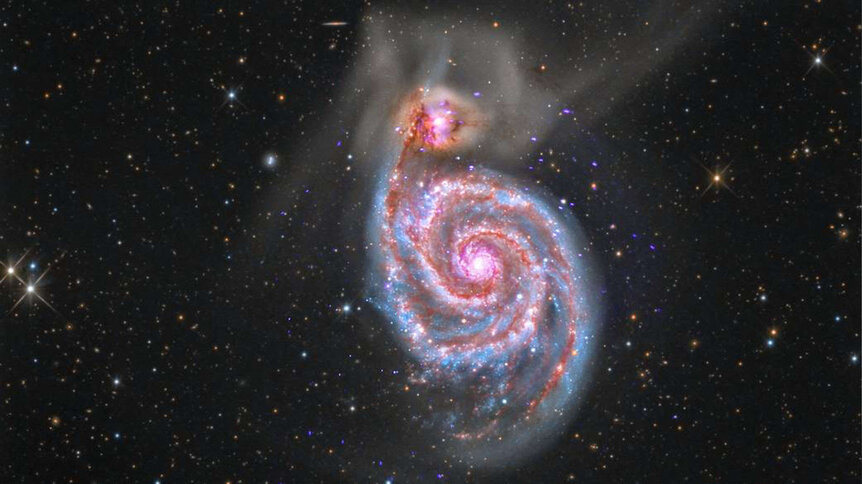Create a free profile to get unlimited access to exclusive videos, sweepstakes, and more!
Not to creep you out, but the Milky Way developed kind of like a human embryo

Galaxies start off as a sort of embryo that grows by stars instead of cells. That might not be at the same level of nightmare fuel as the Starchild from 2001: A Space Odyssey, but almost.
How galaxies like the Milky Way grow from nothing into dazzling behemoths has been something of a mystery until now. While a hypothetical way of figuring out their origins existed, it was impossible to put into practice until astrophysicist Pablo G. Pérez-González of the Instituto de Astrofísica de Canarias and his international team of scientists put together observations from Hubble and SHARDS (Survey for High-z Absorption Red and Dead Sources) spectroscopy to shed light on the formation of these beasts.
Pérez-González is the principal investigator of SHARDS, a survey seen through the OSIRIS (Optical System for Imaging and low-Intermediate Resolution Integrated Spectroscopy) instrument of Gran Telescopio Canarias (GTC). He and his team recently published their findings in The Astrophysical Journal. Previously, massive disc and spheroidal galaxies were thought to form in just one way. SHARDS and Hubble data that had been beamed back revealed something surprising.
“We have been able to detect two modes of formation of bulges, in two waves, which should help to improve galaxy formation simulations,” he told SYFY WIRE in an interview. “One mode is an early and quick formation, anti-hierarchical in some sense. The other mode is more similar to what galaxy formation simulations show, more hierarchical.”
Most massive galaxies were previously thought to form hierarchically through mergers of smaller galaxies. The bulges, or spheroids, in the centers of massive galaxies were therefore assumed to have appear much later because of how much time it took for small galaxies to grow and then merge, with the process being repeated over and over again, but the fast early formation of some of them goes against this theory. Some of these galaxies are so distant that light from their early development has just reached Earth.
The researchers were seeing some of these galaxies as they were when they were still relatively small, and while there are exceptions (such as luminosity and gravitational lensing), many objects that far out are just barely visible. “You need a powerful telescope like Hubble to provide images of these galaxies in the best possible resolution, and the GTC data we have gathered is perfect for studying stellar properties,” Pérez-González said.
“The spatial resolution from Hubble and the spectral resolution from GTC is the novel and powerful approach.”
The two modes of galactic formation that were discovered could go on to tell us at least some secrets about the nascent universe. If you ask Pérez-González, there must have been some force that boosted the development of galaxies back then. What exactly that is remains unknown. It could be anything from jets of star-forming plasma spewed out by supermassive black holes or properties of dark matter that have yet to be understood.
This can be frustrating when simulating the evolution and expansion of the universe from its beginnings almost 14 billion years ago. Without that information, you can’t expect a computer to run a simulation of a galaxy from birth to its current state and end up with an accurate result.
This might be reaching, but there are some unnerving parallels between embryonic galaxies and a developing embryo. The data analyzed by Pérez-González and his team is something like a sonogram from space. Embryos are formed after enough cells have multiplied in the zygote phase, with the main difference being that zygotes keep dividing to produce more cells, while galaxies start off as smaller galaxies that merge with other small galaxies until their future selves began to take shape. Star formation within those galaxies is more comparable to cells, though stars grow through accretion of dust and gas rather than splitting.
What is now the majestic Milky Way was probably unrecognizable (as most living embryos are) at this point.
Zygotes that become embryos begin cephalocaudal development, from the head down, which is why they look like one giant head early on. Sometimes it is almost impossible to tell one species from another in this phase. Galaxies that haven’t developed much further than their inner cores do appear something like huge glowing heads. Proximodistal development, which stars months later when the embryo has turned into a fetus, is growth from the center of the body outwards, such as the development of limbs.
Most galaxies like our own tend to show more of a proximodistal pattern of growth once they have had enough mergers, their outer reaches extending further into the void as more stars spawn. Maybe that explains why some scientists are convinced that our brains are mirrors the universe, however New Age-y it sounds.
“The universe was more efficient in forming stars than expected at early epochs,” said Pérez-González. “Now we need to understand why some galaxies start forming very early in the history of the Universe. For that, we need to look for the progenitors of the bulges, and even beyond. Only then we can understand what these galaxies have that speeds up their formation.”




























